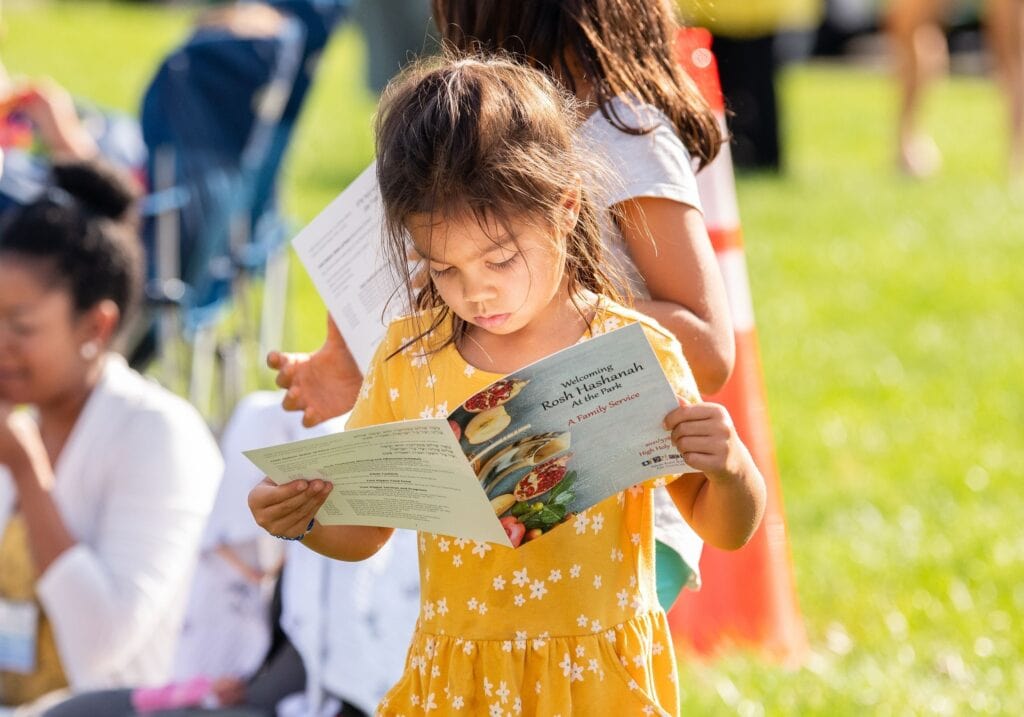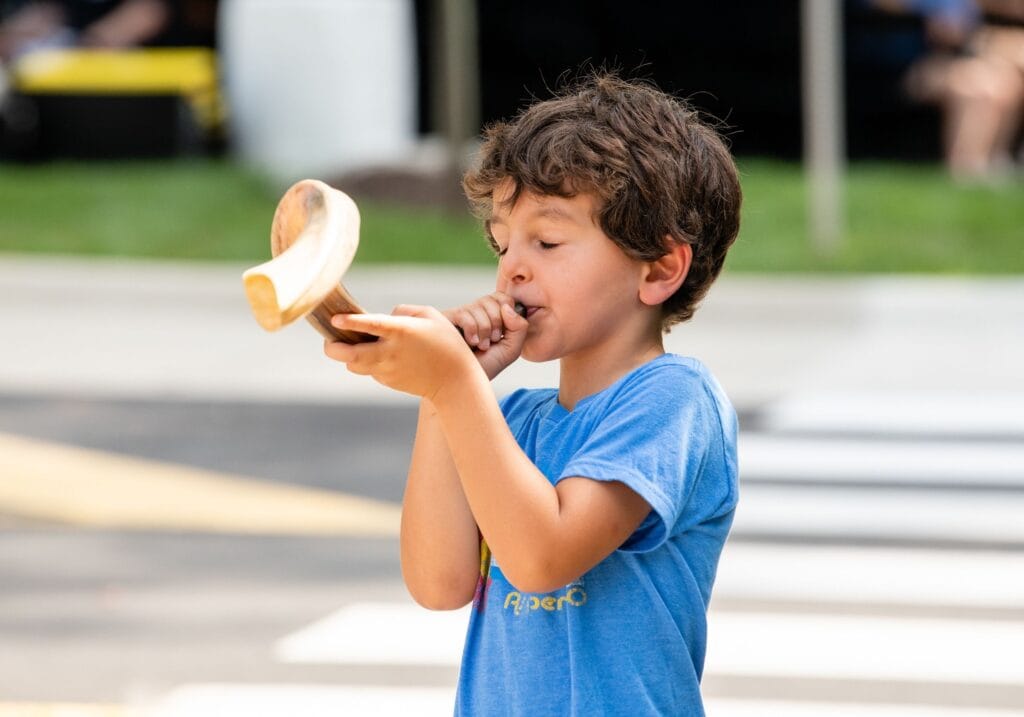


If you are a TRS member, please click here for information about our services. Our online portal is now closed but you may register by emailing or calling 703-532-2217. If you have a Yizkor Remembrance Book submission, please click here by Sept 26.
Members of the community who are not TRS members may register for services here. To read all about the services available for the community, please click here.
Learn more about the High Holy Days and find recipes and more below!
Jews often say: “The High Holy Days are late this year” or “The High Holy Days are early this year.” In fact, the holidays never are early or late; they are always on time, according to the Jewish calendar.
Unlike the Gregorian (civil) calendar, which is based on the sun (solar), the Jewish calendar is based primarily on the moon (lunar), with periodic adjustments made to account for the differences between the solar and lunar cycles. Therefore, the Jewish calendar is described as both solar and lunar. The moon takes an average of twenty-nine and one-half days to complete its cycle; twelve lunar months equal 354 days. A solar year is 365 1/4 days. There is a difference of eleven days per year. To ensure that the Jewish holidays always fall in the proper season, an extra month is added to the Hebrew calendar seven times out of every nineteen years. If this were not done, the fall harvest festival of Sukkot, for instance, would sometimes be celebrated in the summer, or the spring holiday of Passover would sometimes occur in the winter.
Jewish days are counted from sunset to sunset rather than from dawn or midnight. The basis for this is biblical. In the story of Creation (Genesis 1), each day concludes with the phrase: “And there was evening and there was morning. . .” Since evening is mentioned first, the ancient rabbis concluded that in a day evening precedes morning.
The fall is full of Jewish holidays, with the High Holy Days – the 10 Days of Awe (Yamim Noraim) starts with Rosh Hashanah and ends with Yom Kippur – being the most important. This is followed by the Jewish festival of Sukkot, which includes Simchat Torah — part of the 3 Festivals (Sukkot, Pesach and Shavuot) — as the next most important of our holidays. Chanukah, Purim, Tu B’Sh’vat, Lag B’Omer, Yom Ha’atzmaut, Yom HaShoah, and Tisha B’Av are all minor holidays in the Jewish calendar.
Here is a little bit about each of the fall holidays:
Traditionally, Jews age 13 and over fast on Yom Kippur in order to move “beyond” our corporeal body and focus more clearly on atonement and spirituality. However, this ritual is not one-size-fits all. Even the Torah acknowledges that, and exempts those who are ill or pregnant from the fast.
If the fast will negatively affect your health (physical or mental) in any way, there are other ways to observe Yom Kippur meaningfully. Fasting is not meant to endanger your life or your health.
Read more about observing Yom Kippur here: “Your Guide to Fasting (or Not) on Yom Kippur.”
Julia Tortorello-Allen’s essay, “Why I Won’t be Fasting on Yom Kippur,” is also a good resource (note that it contains a brief description of an eating disorder).
And don’t forget — if you take medications, you should still take them on Yom Kippur, even if you need to drink or eat to do so.